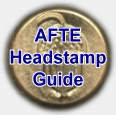The Washington State Patrol CLD is recruiting for a Supervising Forensic Scientist (FS 4) for our Latent Prints Laboratory in Olympia.
RESPONSIBILITIES[/u]
Train, schedule, supervise, evaluate and review the activities of all forensic scientists assigned to the Latent Prints Laboratory.
Examine and compare latent print impressions. Review the casework of other scientists. Process evidence for latent prints in the laboratory and at crime scenes. Assist at crime scenes with all types of evidence. Coordinate the activities of the forensic scientists at crime scenes with other members of the Crime Scene Response Team (CSRT). Enter latent impressions into and search using the automated fingerprint identification system (AFIS). Provide expert witness court testimony. Control, monitor, and provide security for evidence in the Latent Prints Laboratory.
WHO MAY APPLY
This recruitment is open to anyone who meets the requirements.
REQUIREMENTS[/u] (modified on a one-time basis for the purposes of this recruitment)
A Bachelor of Science degree in forensic science, natural science, or closely related field which includes a minimum of 20 semester hours or 30 quarter hours of chemistry and 5 semester or 8 quarter hours of physics. Examples of closely related fields include (but are not limited to): Pharmacology, Medical Technology, Genetics, Cellular or Molecular Biology, Analytical Chemistry, Biochemistry, Clinical Chemistry, Nuclear Chemistry, or Toxicology.
AND
Five years of fingerprint classification and latent fingerprint experience to include examining and comparing latent print impressions, processing evidence for latent prints in a latent print lab and at crime scenes, and at least one superior court appearance as an expert witness.
Additional fingerprint classification and latent fingerprint experience may substitute year for year for education.
Deadline: Until Filled
Salary: $4115-$5266 monthly
Contact:
George Johnston
WSP Crime Lab Division Headquarters
2203 Airport Way S, Suite 250
Seattle WA 98134
Other comments: Additional fingerprint classification and latent fingerprint experience may substitute year for year for education.










 Guests: 219
Guests: 219 Hidden: 0
Hidden: 0 Users: 22
Users: 22
 Total Members:
Total Members: 
